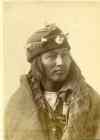Across the sands of time
U of M archives have more than a million ways to look back at city's history
Advertisement
Read this article for free:
or
Already have an account? Log in here »
To continue reading, please subscribe:
Monthly Digital Subscription
$1 per week for 24 weeks*
- Enjoy unlimited reading on winnipegfreepress.com
- Read the E-Edition, our digital replica newspaper
- Access News Break, our award-winning app
- Play interactive puzzles
*Billed as $4.00 plus GST every four weeks. After 24 weeks, price increases to the regular rate of $19.00 plus GST every four weeks. Offer available to new and qualified returning subscribers only. Cancel any time.
Monthly Digital Subscription
$4.75/week*
- Enjoy unlimited reading on winnipegfreepress.com
- Read the E-Edition, our digital replica newspaper
- Access News Break, our award-winning app
- Play interactive puzzles
*Billed as $19 plus GST every four weeks. Cancel any time.
To continue reading, please subscribe:
Add Winnipeg Free Press access to your Brandon Sun subscription for only
$1 for the first 4 weeks*
*$1 will be added to your next bill. After your 4 weeks access is complete your rate will increase by $0.00 a X percent off the regular rate.
Read unlimited articles for free today:
or
Already have an account? Log in here »
Hey there, time traveller!
This article was published 14/07/2016 (3369 days ago), so information in it may no longer be current.
The black-and-white photo, taken well over a century ago, shows a young aboriginal woman with thick, matted hair. She is wearing a heavy coat obviously made by recent immigrants to her home, along the Red and Assiniboine rivers.
In another image, an older woman, in traditional dress, poses with a baby peeking at the camera over a cradleboard.
But the common denominator in both photos, taken in Winnipeg in the 1880s — and now on display at the University of Manitoba Archives and Special Collections — is the eyes.
It’s as if they could see the future.
“Obviously, in the 1880s, it was a period of significant, jarring, wrenching change for the indigenous people on the Prairies,” explained Brian Hubner, acting head of archives and special collections at the University of Manitoba. “You can see it in their faces. These are not happy expressions.”
The rare photos are part of the Spirit of Red River exhibit, which also includes documents and photos of Louis Riel, old architecture collections — even an 1888 exam from the University of Manitoba.
Hubner said the exhibit, which runs until Oct. 7 on the third floor of the Elizabeth Dafoe Library (25 Chancellors Circle), not only offers a glimpse into Winnipeg’s past, but also represents just an inkling of the hundreds of thousands of photos and documents contained in the archive that can be accessed by the public.
There are more than 500,000 photographs alone that document all facets of life in Manitoba dating back some 135 years.
Specifically, the Spirit display contains two letters written by Riel, and another written by his father, along with five photos of the Métis leader. There are also photos from Barber and Barber Architectural Firm, which include Winnipeg’s old gingerbread city hall (the city’s second), completed in 1886.
The 1888 exam papers were from a time when the U of M had no instructors, only written exams that were either passed or failed upon completion, said Hubner.
The photos of the Métis and First Nations inhabitants were taken by a company called Hall and Lowe Artists and Photographers, which operated in Winnipeg in the mid-1880s. The subjects were probably paid, and the photos were used for photo albums the company sold — often back in Europe — as exotic souvenirs of the untamed west.
“They were like a conversation piece,” Hubner noted. “They were sold as a curiosity.”
For example, some vintage photos in the display were recovered from an Australian auction.
Hubner said the archives are always open to the public. And with more than a million photos, documents and artifacts, he said such displays are meant to encourage a curiosity.
“This is a way for people to come out and see them,” he said. “It’s important to see where the Red River (settlement) and Winnipeg came from, how the city grew, and the relationship between indigenous people and the city of Winnipeg.
“They’re not facsimiles. They’re the real thing. That’s kind of rare these days.”
The archives are open Monday to Friday from 8:30 a.m. to 4:30 p.m. and admission is free.
randy.turner@freepress.mb.caTwitter: @randyturner15

Randy Turner
Reporter
Randy Turner spent much of his journalistic career on the road. A lot of roads. Dirt roads, snow-packed roads, U.S. interstates and foreign highways. In other words, he got a lot of kilometres on the odometer, if you know what we mean.
Our newsroom depends on a growing audience of readers to power our journalism. If you are not a paid reader, please consider becoming a subscriber.
Our newsroom depends on its audience of readers to power our journalism. Thank you for your support.
History
Updated on Friday, July 15, 2016 11:33 AM CDT: Corrects reference to cradleboard.


